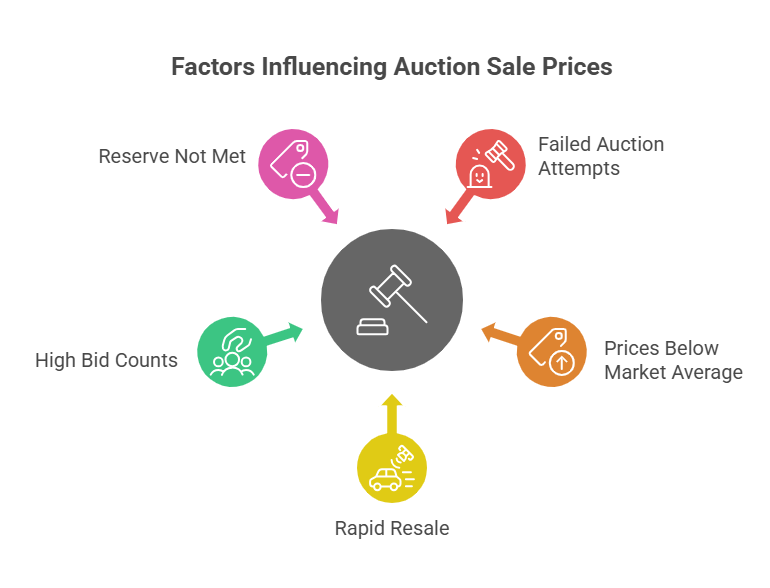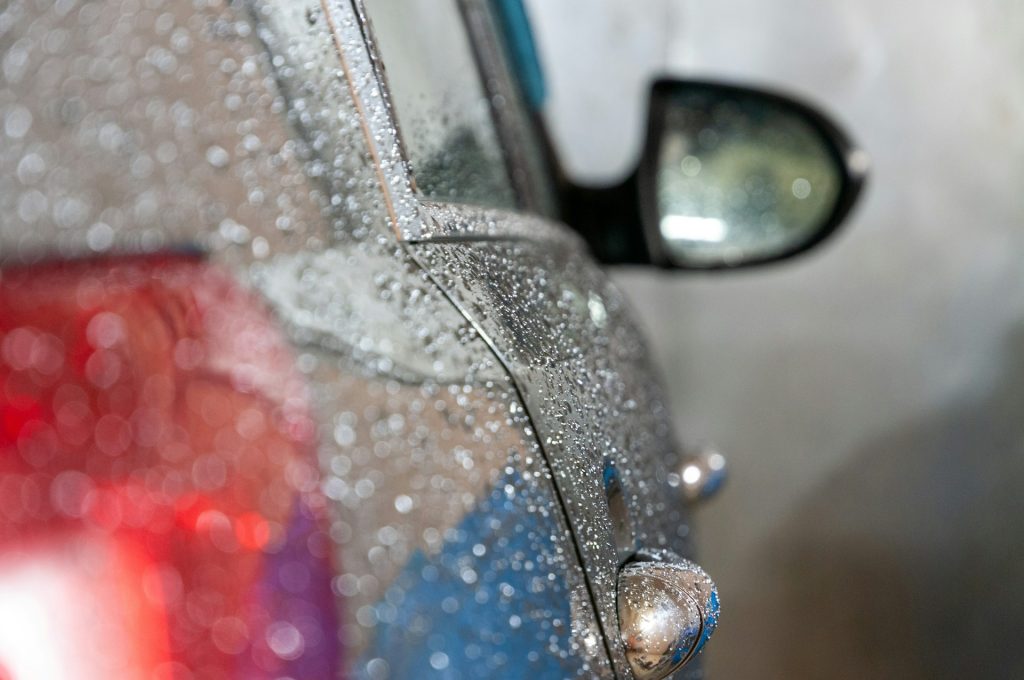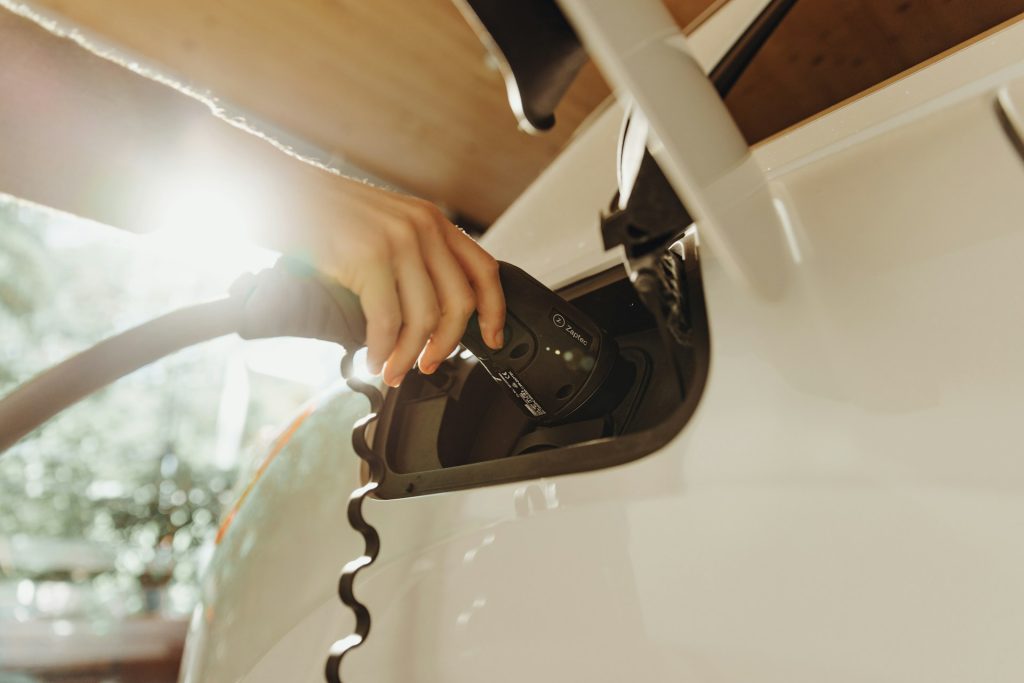When you run an auction history check by VIN, you can see exact sale dates, winning bids, and condition reports that never appear in a standard vehicle history report. For example, some cars are listed at auction only weeks after an accident repair, while others show repeated no-sale records because dealers walked away after inspection. This type of data tells you not just what happened to the car, but how the market judged its true value and condition.
Why Auction History Matters Before Buying
Consider bidding on any vehicle? Review its auction background to protect your investment. The car’s history from auction databases shows valuable data. This includes previous sale attempts, damage reports, and ownership patterns. Smart consumers use this information to check the validity.
Key benefits of checking auction history:
- Reveals true market value based on actual dealer auction prices.
- Exposes vehicles that failed multiple auction attempts.
- Shows harm history even with clean titles.
- Identifies stolen or flood-damaged cars before purchase.
- Helps verify mileage accuracy and ownership changes through VIN number search.
How Auction History Exposes Dealer Tricks

Dealers often manipulate information. They inflate the auction prices of cars and hide vehicle problems. They may clean titles, reset odometers, or conceal auction failures. Thus, compromised vehicles appear pristine. Checking the VIN number against auction databases reveals these deceptive practices instantly and provides security against fraud.
| Dealer Trick | How Auction History Reveals It |
| Hidden harm | Shows previous condition reports and photos |
| Inflated pricing | Reveals actual auction sale amounts |
| Title washing | Displays original impairment designations |
| Mileage fraud | Shows odometer readings at each auction |
| Flood concealment | Records water harm even with clean titles |
According to A Better Bid, approximately 15% of used vehicles sold by dealers have undisclosed auction histories that could affect their value.
Step-by-Step Guide to Checking Auction History by VIN
Getting comprehensive car auction data requires the right approach and reliable sources for auto auction history by VIN number searches. Most buyers don’t know where to search or what information to search for when examining auction records. Follow these steps to uncover full vehicle histories and check each model thoroughly.
Complete VIN number check process:
- Locate the 17-character VIN number on the dashboard or door frame.
- Use trusted auction sites for professional records.
- Cross-reference multiple databases for comprehensive coverage.
- Review all photos, condition reports, and sale prices.
- Verify mileage consistency across all auction entries.
- Check for title changes or impairment designations using proper filter options.
Decoding Auction Photos Like a Pro
A Better Bid Pro Tip: Auction photos often reveal what condition reports leave out. Look closely for mismatched paint, water stains in the cabin, or rust on bolts; each can signal past damage or flood exposure.
What many buyers miss is the context: a car polished for sale might look clean in daylight photos, but zooming in on shadows, trunk lining, or undercarriage shots often exposes repairs that dealers try to hide. Those details can change the car’s value far more than mileage or trim level.
How Auction Sale Prices Reveal Fair Market Value

Understanding the auction value of my car through comparative sales data provides negotiating power against inflated dealer prices. Car bid history shows what dealers actually paid. You, in turn, get leverage in price discussions. Determine if you’re getting a fair deal or being overcharged for any specific model type.
Auction price indicators to analyze:
- Multiple failed auction attempts suggest underlying problems.
- Prices below the market average indicate hidden issues.
- Rapid resale after auction purchase raises quality concerns.
- High bid counts show competitive interest and fair pricing.
- Reserve not met indicates seller expectations exceed market reality.
Vehicle selling below 80% of the estimated market value at auction typically have undisclosed mechanical or structural problems.
Risks of Buying Cars That Stay Unsold for Months

Vehicles that repeatedly fail to sell at auction carry significant risks that most buyers overlook. These vehicles often have hidden problems, excessive wear, or impairments that professional dealers refuse to bid on. Understanding why certain vehicles remain blocked from successful sales protects you from costly mistakes when examining a car’s history records.
| Time Unsold | Typical Problems | Risk Level |
| 1-2 months | Minor cosmetic issues | Low |
| 3-4 months | Mechanical problems or accident history | Medium |
| 5-6 months | Major engine issues or flood history | High |
| 6+ months | Structural defects or lemon history | Very High |
How to Spot “Parts-Only” Cars Before It’s Too Late
Some auction vehicles are designated for parts only, meaning they’re unsafe to drive and shouldn’t be registered. Dealers sometimes buy these vehicles and attempt to resell them as roadworthy vehicles to unsuspecting consumers. Knowing the requirements for an auction license helps you understand which dealers have legitimate access to quality inventory.
Warning signs of parts-only vehicles:
- VIN decoder shows salvage or parts-only designation.
- Multiple structural defect reports in auction records.
- Engine problems are listed as “major mechanical issues”.
- Frame harm or airbag deployment history.
- Failed safety inspections at previous auctions.
Vehicle Categories Most at Risk in Auctions
Luxury cars, electric vehicles, and high-mileage models face the highest risks at auction across all vehicle types.
Ex-Rental and Ride-Share Vehicles
Former rental and ride-share vehicles flood auctions with high mileage and unknown maintenance histories. These vehicles often suffer from various problems. These are aggressive driving, deferred maintenance, and excessive wear patterns. Some buyers and sellers of auction cars view them as bargains. However, the long-term reliability risks usually outweigh initial savings for most model categories.
Hidden Battery Issues of Electric Cars

Electric vehicles at auction often hide expensive battery problems. These issues aren’t immediately apparent during standard inspections. Battery degradation can cost thousands to repair. Therefore, thorough verification is essential before purchase.
Many auction houses lack proper testing equipment for electric vehicle components, creating security risks for buyers.
| Battery Issue | Cost Range | Detection Method |
| Capacity loss | $3,000-$8,000 | Professional battery test |
| Cell damage | $5,000-$15,000 | Diagnostic scan tool |
| Cooling system failure | $2,000-$5,000 | Thermal imaging |
| Charging problems | $1,000-$4,000 | Charging port inspection |
25% of electric vehicles at auction have battery issues that reduce their range by more than 20%.
Seasonal Auction Trends You Should Know
Buying cars at online auctions follows predictable seasonal patterns. Grasping these trends helps you time purchases for better selection and lower prices in the right place. Different vehicle types and models perform better during specific seasons. Demand fluctuations and market history determine the current trend.
Seasonal auction patterns:
- Spring brings higher convertible and sports car prices.
- Summer increases SUV and truck demand significantly.
- Fall offers the best deals on luxury sedans.
- Winter reduces competition for most vehicle categories.
- Holiday periods typically see reduced auction activity.
Summary
Checking auction history by vehicle identification numbers protects buyers from overpaying for problematic vehicles and reveals dealer deception. This verification process exposes harm, theft, and mechanical issues that standard inspections miss. Smart consumers use auction records to negotiate better deals and avoid costly mistakes when purchasing used vehicles with proper validity checks.
![]() FAQ
FAQ
Show more
Can You Buy a Car from Auction with a Missing VIN?
No legitimate auction will sell a vehicle without a valid VIN number. Missing VINs indicate stolen vehicles or illegal activity. Reputable auction houses require proper documentation for all sales.
What Does It Mean If a Car Was Bounced Between Multiple Auctions?
When a vehicle appears at multiple auctions without selling, it typically indicates serious problems that professional dealers recognize and avoid. This pattern suggests underlying issues that make the vehicle difficult to resell.
Common reasons for auction bouncing:
– Undisclosed accident harm or structural problems.
– Mechanical issues require expensive repairs.
– Title problems or ownership disputes.
– Overpriced relative to actual condition and market value.
– Failed inspections or certification requirements.
What’s the Average Time Between an Accident and an Auction Listing?
Most damaged vehicles appear at auction within 30-90 days after being reported at auto auction processing centers, though insurance settlements can extend this timeline significantly.
Can I See If a Car Failed to Sell at Auction?
Yes, car auction records typically show all sale attempts, including failed bids, reserve prices not met, and vehicles that generated no interest from professional buyers.
Do Auction Records Show Flood Exposure Even When Titles Are “Clean”?
Auction databases often contain flood harm information even when titles have been washed clean, as many auction houses conduct independent inspections regardless of official title status.
Recommended Articles
:format(webp)/vulcan.abetter.bid%2Fwp-content%2Fuploads%2F2023%2F03%2Frawkkim-UsWvRFTssRs-unsplash.jpg)

:format(webp)/vulcan.abetter.bid%2Fwp-content%2Fuploads%2F2025%2F09%2Fsai-kalyan-achanta-OeGVL6vuPUI-unsplash.jpg)
:format(webp)/vulcan.abetter.bid%2Fwp-content%2Fuploads%2F2022%2F10%2F2022-10-05-11.30.40-150x150.jpg)
 FAQ
FAQ :format(webp)/vulcan.abetter.bid%2Fwp-content%2Fuploads%2F2023%2F02%2Fgetty-images-4D4_sjiYu-Y-unsplash.jpg)
:format(webp)/vulcan.abetter.bid%2Fwp-content%2Fuploads%2F2022%2F10%2F2022-10-05-11.31.58-150x150.jpg)
:format(webp)/vulcan.abetter.bid%2Fwp-content%2Fuploads%2F2025%2F08%2Fgetty-images-dsLmP47anSs-unsplash.jpg)
:format(webp)/vulcan.abetter.bid%2Fwp-content%2Fuploads%2F2025%2F10%2Fcopart-vs-a-better-bid.png)
:format(webp)/vulcan.abetter.bid%2Fwp-content%2Fuploads%2F2025%2F10%2Fcopart-vs-iaai-1.png)
:format(webp)/vulcan.abetter.bid%2Fwp-content%2Fuploads%2F2025%2F09%2Fvasile-valcan-1HqixV1agUw-unsplash.jpg)

